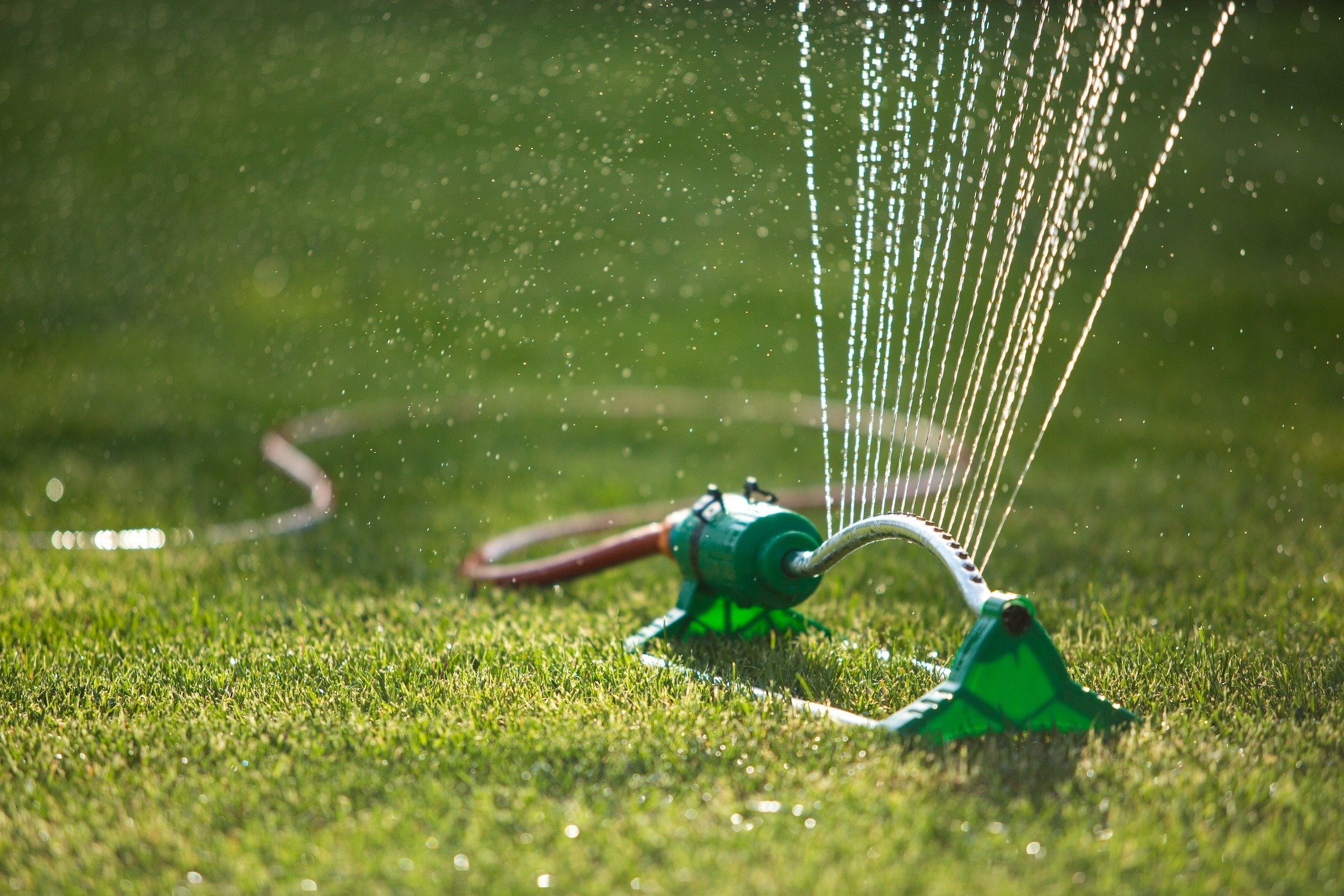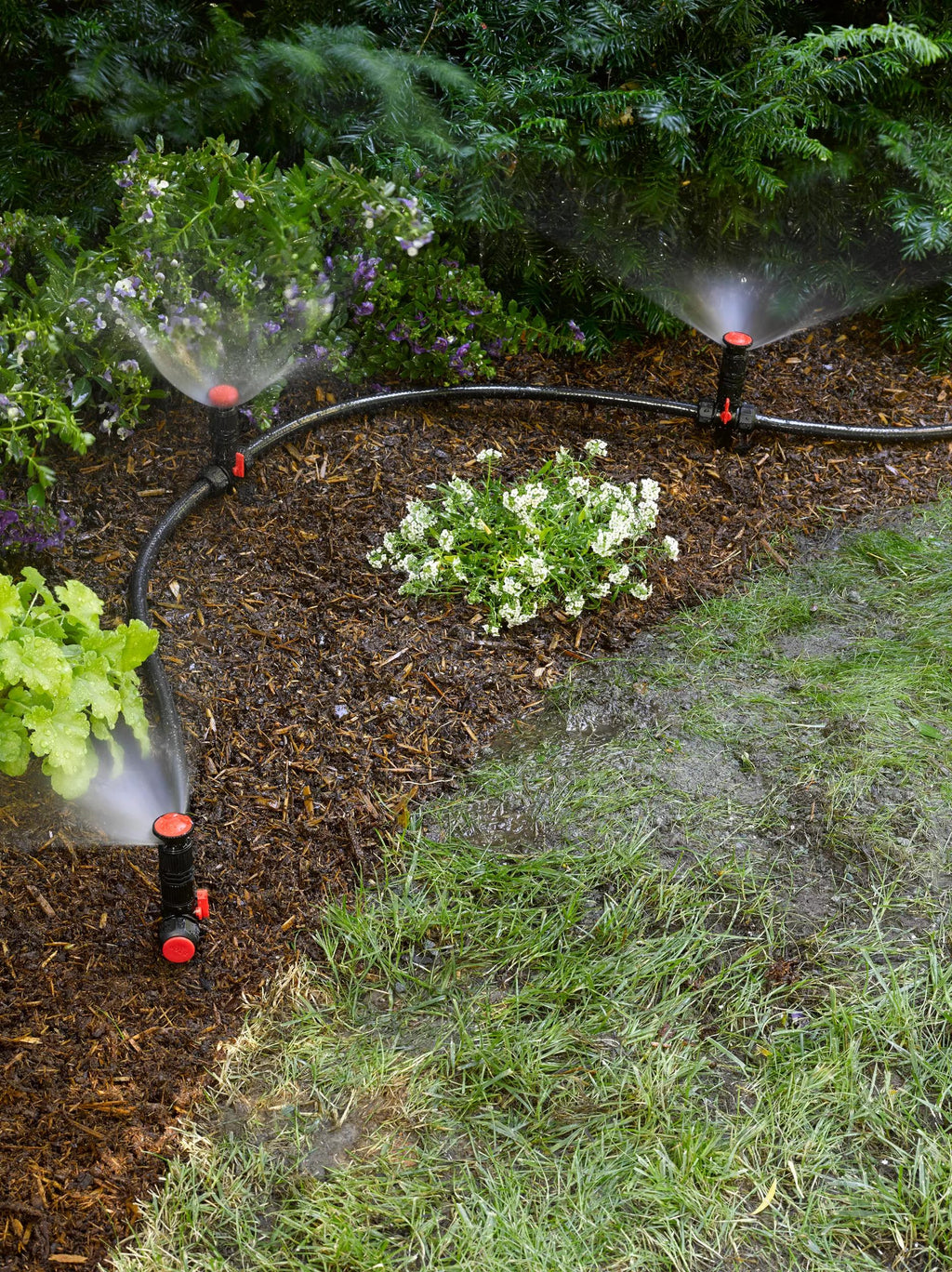Discovering the Many Usual Problems in Lawn Sprinkler Systems and Their Fixes
Automatic sprinkler are important for keeping healthy landscapes, yet they typically encounter different troubles. Common issues include blocked nozzles, busted pipelines, and uneven watering patterns. Each of these can substantially affect system performance and water performance. Understanding these problems and their options is essential for any homeowner. The complying with areas will certainly outline typical difficulties and the needed fixings to maintain a lawn sprinkler functioning at its finest. What comes next might shock those not really prepared for upkeep facts.
Clogged Nozzles and Lawn Sprinkler Heads
Clogged nozzles and sprinkler heads prevail concerns that can greatly hinder the performance of a sprinkler system. In time, debris such as dirt, algae, and mineral build-up can gather, blocking water circulation and bring about irregular insurance coverage in the grass or yard. This can lead to specific areas getting insufficient water, while others may become over-saturated.
Routine maintenance is important to stop these blockages. Routine checks can identify any kind of clogs, and cleansing can typically be achieved with easy tools like a tiny brush or a toothpick. In many cases, soaking stopped up components in vinegar can help liquify mineral down payments.
For serious blockages, substitute of the nozzle or head may be needed to restore correct function. Addressing these concerns promptly ensures that the automatic sprinkler runs effectively, optimizing and keeping a healthy and balanced landscape water use.
Broken Pipeline and Leaks
Damaged pipes and leakages can greatly interfere with the capability of an automatic sprinkler. Determining pipeline damages early is vital to prevent further issues, and recognizing repair service techniques can streamline the process. Furthermore, executing preventative maintenance tips can aid guarantee the longevity of the system and minimize the chance of future issues.
Identifying Pipeline Damages
Exactly how can homeowners effectively determine pipeline damage in their lawn sprinkler? To begin, they need to consistently examine their backyards for uncommon damp spots or pooling water, which may suggest a leak. Furthermore, house owners can check their water bills for unusual increases, suggesting covert leakages within the system. Observing the sprinkler heads for irregular spray patterns or not enough protection can also signify potential pipe issues. Listening for uncommon sounds, such as hissing or gurgling, might suggest air escaping from harmed pipelines. Lastly, carrying out visual assessments of subjected pipelines for splits or deterioration can help determine problems. By employing these techniques, property owners can proactively address and spot pipeline damage in their lawn sprinkler systems before it results in extra substantial problems.
Repair Service Techniques Overview
Addressing pipeline damage in an automatic sprinkler needs a systematic technique to repair work, especially when dealing with leaks and breaks. The primary step often includes finding the broken location, which can be achieved through visual inspection or stress testing. Once identified, the repair work method might vary; for little leakages, utilizing pipe sealer or epoxy can successfully secure the afflicted section. In situations of substantial breaks, removing the harmed pipe section and replacing it with brand-new piping, protected with proper connectors, is suggested. Furthermore, ensuring appropriate alignment and protecting joints will assist prevent future problems. After repairs, complete testing of the system is important to validate that leaks have actually been resolved and that the system runs effectively.
Preventative Maintenance Tips
To decrease the risk of damaged pipelines and leaks in an automatic sprinkler, normal preventative upkeep is vital. House owners ought to consistently inspect the system for visible damages, making certain that installations and pipelines are undamaged. Seasonal adjustments are necessary; prior to winter months, systems should be drained to avoid cold, while springtime checks can identify wear from frost or shifting soil. Furthermore, maintaining the location around lawn sprinkler heads free from debris helps avoid obstructions that might cause leakages. Regularly testing water pressure can reveal underlying issues, as extreme pressure may strain pipes. Recording upkeep tasks can assist track performance and determine repeating issues, making it much easier to resolve any kind of concerns proactively.
Unequal Watering Patterns
Irregular watering patterns can cause uneven yards and stressed out plants, coming from different causes such as blocked nozzles or misaligned sprinkler heads. Identifying these concerns is crucial for reliable repair work and ensuring regular water circulation across the landscape. Solutions may entail straightforward upkeep tasks or adjustments to the lawn sprinkler system for suitable performance.
Root Causes Of Irregular Watering
When an automatic sprinkler stops working to distribute water equally across a lawn, numerous aspects may add to this problem. One common reason is improper lawn sprinkler head placement, which can bring about overlapping or inadequate protection. In addition, stopped up nozzles can limit water flow, leading to dry spots. Variants in water stress can also affect distribution, as some locations may obtain much more water than others. Unequal surface or soil compaction can impact just how water penetrates the ground, leading to unequal absorption. The age of the lawn sprinkler components might result in lessened performance, contributing to irregular watering patterns. Identifying these causes is necessary for maintaining an efficient lawn sprinkler system and ensuring a healthy yard.
Solutions for Fixing Issues
Addressing uneven watering patterns needs an organized approach to identify and correct underlying problems. Initially, inspecting sprinkler heads for obstructions or damage is crucial; cleansing or changing them can boost water circulation. Next off, readjusting the lawn sprinkler's pressure settings may help achieve a more uniform spray. Additionally, assessing the design of the sprinklers can expose areas that need repositioning to guarantee protection consistency. Looking for leaks in pipes or fittings is crucial, as leakages can bring about uneven watering. Programming the timer to accommodate different areas based on plant demands can boost total performance. By applying these remedies, one can properly recover well balanced watering patterns within the landscape.
Timer and Control Problems
A well-functioning timer is crucial for peak lawn sprinkler system performance, many home owners come across issues that interrupt their irrigation timetables. Typical issues consist of malfunctioning shows, where timers might not mirror the desired watering times, resulting in over- or under-watering. In addition, power interruptions can reset timers, causing them to change to skip settings and ignoring the personalized timetables property owners rely on. Breakdowns can likewise originate from outdated technology; older timers may lack the attributes required for maximum control, such as rain sensing units or smart innovation integration. Electrical wiring issues can avoid signals from getting to the valves, providing the system unusable. Regular maintenance and prompt updates can help ease these issues. Property owners should consider getting in touch with specialists for repairing to ensure their timers operate efficiently and effectively, as appropriate control is essential for conserving and preserving a healthy landscape water sources
Lawn Sprinkler Pressure Issues
Just how can poor water pressure impact an automatic sprinkler's efficiency? Inadequate water pressure can cause unequal water circulation, leading to completely dry spots and overwatered areas. This variance jeopardizes the general health and wellness of the landscape, as next plants may deal with either drought tension or root rot. Low stress can additionally prevent the procedure of lawn sprinkler heads, avoiding them from reaching their designated click this link variety and coverage.
 On the other hand, excessive pressure can create damage to the system, bring about leaks or busted components. Ruptured pipelines and malfunctioning sprinkler heads might take place, incurring expensive repairs. Determining the source of pressure issues is crucial; common perpetrators consist of blocked filters, malfunctioning shutoffs, and even municipal supply issues. Normal system checks can help maintain appropriate stress, guaranteeing a effective and reliable lawn sprinkler. Correct pressure management is vital for peak efficiency and longevity of the irrigation system.
On the other hand, excessive pressure can create damage to the system, bring about leaks or busted components. Ruptured pipelines and malfunctioning sprinkler heads might take place, incurring expensive repairs. Determining the source of pressure issues is crucial; common perpetrators consist of blocked filters, malfunctioning shutoffs, and even municipal supply issues. Normal system checks can help maintain appropriate stress, guaranteeing a effective and reliable lawn sprinkler. Correct pressure management is vital for peak efficiency and longevity of the irrigation system.Seasonal Maintenance Tips
As the periods adjustment, applying regular maintenance for an automatic sprinkler ends up being crucial to ensure peak efficiency and long life. Home owners should begin by checking the system before the onset of each season. In the spring, inspect for any winter season damage, clean the nozzles, and adjust the spray patterns to accommodate new growth. During the summer, verify that all areas are running successfully, checking for any kind of completely dry places or overwatering. In the autumn, it is necessary to prepare the system for winter months by draining pipes the lines, blowing out the pipes, and insulating any revealed parts. An extensive assessment in the winter season can help recognize prospective issues that might develop in the spring. Regular upkeep not only prolongs the life of the lawn sprinkler however also advertises a healthy landscape, decreasing water waste and ensuring a reliable irrigation process throughout the year.

Repairing Common Sprinkler Issues
What steps should house owners take when encountered with common sprinkler problems? They ought to observe the system for visible indications of breakdown, such as busted heads or damp places, indicating leaks. Next, checking the timer settings and verifying the system is programmed correctly is important, as incorrectly set timers can cause overwatering or underwatering. House owners need to additionally evaluate the shutoffs for clogs and validate they close and open effectively.
If the system reveals low tide stress, it may be due to a blocked filter or a malfunctioning pump, necessitating extensive cleaning. Additionally, homeowners need to confirm that the watering areas are functioning separately and not overlapping, which can lose water. If issues linger, getting in touch with a professional might be essential to diagnose and settle more intricate issues, verifying the automatic sprinkler operates effectively and effectively.
Often Asked Concerns
Exactly how Often Should I Evaluate My Lawn Sprinkler System?
A lawn sprinkler must be examined at the very least two times a year, preferably in spring and fall. Routine checks aid identify leakages, blockages, and various other concerns, making certain optimal efficiency and water performance throughout you could look here the seasons.
Can I Set Up a Lawn Sprinkler Myself?
Yes, a person can mount a sprinkler system themselves, supplied they have the required tools, knowledge, and abilities. Nonetheless, it is suggested to consult regional policies and standards to assure proper installment and conformity.
What Is the Typical Life-span of an Automatic Sprinkler?
The typical lifespan of an automatic sprinkler generally varies from 10 to two decades, depending on the high quality of materials, maintenance techniques, and environmental conditions, which can significantly influence its durability and total efficiency. Sprinkler Repair.
Exist Eco-Friendly Options for Sprinkler Systems?
Green choices for automatic sprinkler consist of drip watering, rain sensors, and smart controllers. These innovations preserve water, minimize runoff, and advertise effective watering, making them sustainable options for environmentally aware house owners looking for effective watering options.
Just How Do Climate Condition Impact Sprinkler Performance?
Weather considerably affect lawn sprinkler efficiency; for example, too much warm can result in dissipation, while hefty rainfall may create oversaturation. Additionally, wind can interrupt water distribution, leading to ineffective watering and irregular coverage throughout landscapes.
Clogged nozzles and sprinkler heads are common issues that can significantly impede the efficiency of a lawn sprinkler system. When a sprinkler system falls short to disperse water evenly across a yard, several variables might add to this issue. A well-functioning timer is essential for peak lawn sprinkler system efficiency, many house owners experience problems that interrupt their irrigation schedules. Just how can insufficient water pressure effect a sprinkler system's effectiveness? Regular system checks can help keep correct pressure, ensuring a efficient and reliable lawn sprinkler system.